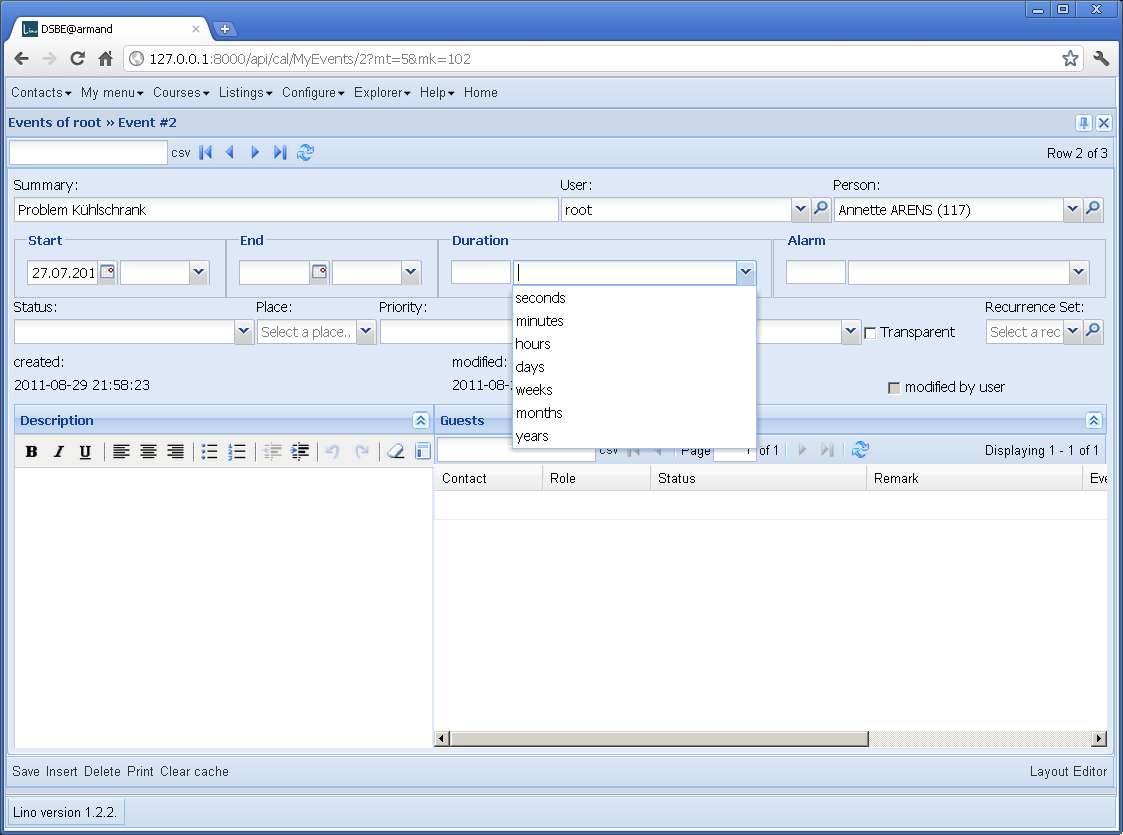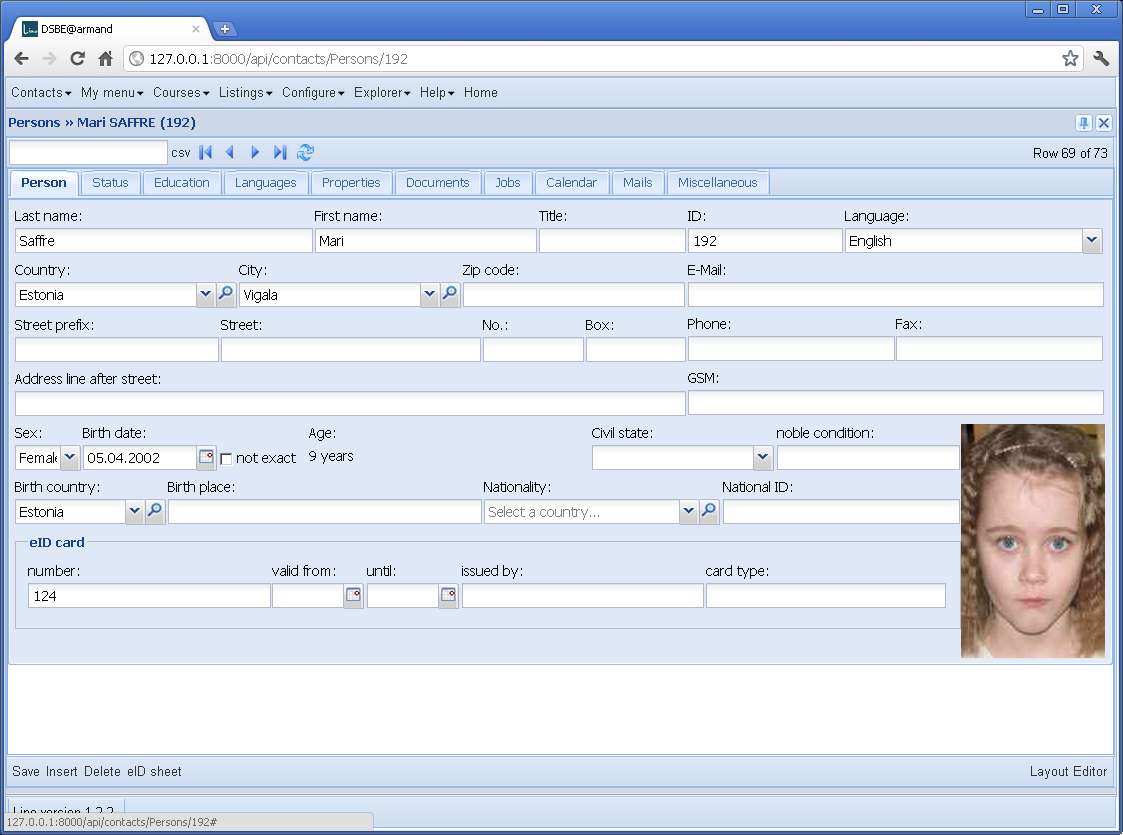20110829¶
20110829a Export to remote calendars¶
Continuing on remote calendars (docs/tickets/47). So far Lino can import data from remote calendars, now I’ll start the opposite direction: modifying an event through the Lino must trigger an update of the remote calendar.
Event.save() should not directly update the remote calendar, just set a status flag to “ready to send” because the save should not fail when the calendar server has a problem. Sending the modifications to the calendar server should be done by a background process. watch_calendars command can do both directions.
New special model method on_user_change gets called each time an instance of this model was changed (created, modified, deleted) though a user interface.
First success after only one hour of programming!
20110829b Field Sets¶
Ich hatte eine spontane Vision, wie ich den folgenden todo-Punkt lösen kann:
Field groups. Die Felder alarm_value und alarm_unit sollten wirklich gruppiert sein.
Am elegantesten wäre in der Model definition:
alarm = fields.FieldGroup(_("Alarm"),'alarm_value alarm_unit')
Und siehe da, es funktioniert! Noch nicht zufriedenstellend, aber cool dass das überhaupt so einfach ging.
20110829c Renamed “attendee” to “guest”¶
Google nennt die Teilnehmer eines Termins einfach “Gäste”. Nicht “attendees” wie im RFC, und auch nicht “participants” wie man es oft sieht. Genial.
20110829d makeui¶
Ich habe noch nicht rausgefunden, wie ich es schaffe,
dass makeui und makedocs für alle
user interfaces funktionieren können.
Vielleicht muss ich eine neue Konvention beschließen:
dass das in ROOT_URLCONF angegebene Modul außer der
von Django erwarteten Variablen urlpatterns
für Lino auch eine Variable ui definieren muss.
Hm… das ist nicht schön…
Oder könnten wir es so machen: in der urls.py stünde nur:
from django.conf import settings
urlpatterns = settings.LINO.urlpatterns
Aber das geht momentan noch nicht, weil kernel.analyze_models den parameter make_messages hat… Lassen wir das mal was reifen…
20110829e Field Sets¶
Lino now offers a way to define fieldsets. A fieldset is a group of fields that are visually together in an extra box than can have a label for the group. The labels of the fields are not displayed by default but can optionally be overridden.
This change wasn’t trivial because it required a few fundamental internal
changes in lino.ui.extjs3.ext_elems.
First usage case was the detail of an Event. This model has several fields like this:
duration_value = models.IntegerField(_("Duration value"),null=True,blank=True) # iCal:DURATION
duration_unit = DurationUnit.field(_("Duration unit"),null=True,blank=True) # iCal:DURATION
Now we can add a lino.fields.FieldSet below that declaration:
duration = fields.FieldSet(_("Duration"),'duration_value duration_unit')

Here is the corresponding .dtl file:
main =
summary user project
start end duration alarm
status place priority access_class transparent rset
created:20 modified:20 user_modified
description GuestsByEvent
Another example is lino.apps.dsbe.models.Person.eid,
a fieldset that defines labels for its children:
eid = fields.FieldSet(_("eID card"),
"card_number card_valid_from card_valid_until card_issuer card_type",
card_number=_("number"),
card_valid_from=_("valid from"),
card_valid_until=_("until"),
card_issuer=_("issued by"),
card_type=_("card type"),
)
